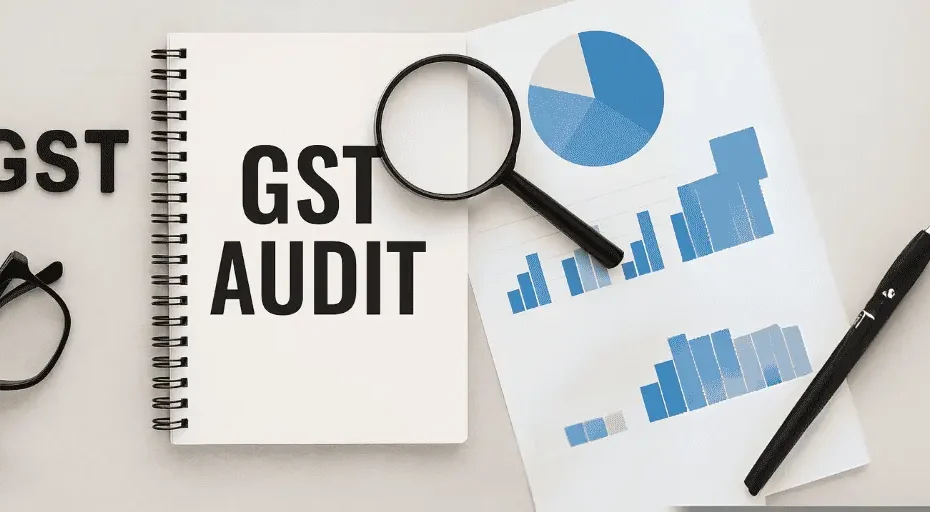GST Audit: Applicability, Process & Common Pitfalls
The GST audit is a critical compliance mechanism under India’s Goods and Services Tax regime. It ensures that businesses maintain transparency, correct tax reporting, and adherence to the provisions laid out in the GST Act. As organizations grow in size and complexity, so does the importance of regular auditing to prevent discrepancies and non-compliance.
In this article, we’ll break down what a GST audit is, who it applies to, the step-by-step process, and the common pitfalls businesses must watch out for. Whether you’re a small business nearing the threshold limit or a seasoned enterprise, understanding the gst audit can save you from hefty penalties and legal troubles.
What is a GST Audit?
A GST audit is the examination of records, returns, and other documents maintained by a registered taxpayer. The primary aim is to verify the correctness of the turnover declared, taxes paid, refund claimed, and input tax credit availed. It also ensures the business is in compliance with the provisions of the GST Act and related rules.
As per the original Section 35(5) of the CGST Act, businesses whose annual aggregate turnover exceeds ₹2 crore in a financial year were required to get their accounts audited by a Chartered Accountant or Cost Accountant. However, this provision was later removed via the Finance Act, 2021. Despite this amendment, audits by the tax authorities can still be conducted under Section 65, 66, and 67 of the GST Act.
Applicability of GST Audit
Even though the mandatory requirement under Section 35(5) has been abolished, gst audit is still applicable in certain scenarios:
Departmental Audit (Section 65): Conducted by the Commissioner or any authorized officer, either at the taxpayer’s place of business or the department’s office.
Special Audit (Section 66): Ordered by a GST officer if they find the value declared not matching the input tax credit availed, or in cases of complex transactions. A Chartered Accountant or Cost Accountant is nominated by the Commissioner for this.
Inspection, Search, and Seizure (Section 67): Conducted when there is a reason to believe tax evasion or suppression of turnover.
Thus, while self-certified reconciliation statements have replaced earlier CA-audited forms (like GSTR-9C), the risk of gst audit by tax authorities remains real and prevalent.
GST Audit Process: Step-by-Step
If you are selected for a GST audit, here’s how the process usually unfolds:
1. Notice of Audit
A prior intimation is issued (Form ADT-01), giving at least 15 working days before the audit begins.
2. Commencement of Audit
The audit must be completed within three months from the commencement date. However, this period can be extended by the Commissioner by a further six months.
3. Submission of Documents
Taxpayers must submit necessary documents like GST returns, sales invoices, purchase records, electronic cash/credit ledger, e-way bills, and financial statements.
4. Field Visit & Discussion
In a departmental audit, officers may visit the premises to verify physical records and have discussions with the management.
5. Findings & Rectification
Post audit, the officer will communicate discrepancies, if any. The taxpayer will be given an opportunity to rectify the same.
6. Final Audit Report
A final report is issued detailing the audit findings. If discrepancies remain unresolved, further actions including penalties or demand notices may follow.
Understanding each step of the gst audit process ensures preparedness and minimizes compliance risks.
Common Pitfalls in GST Audit
Despite best efforts, many businesses falter due to avoidable mistakes. Here are the most frequent issues observed during a gst audit:
1. Mismatch in Returns
Differences between GSTR-1, GSTR-3B, and books of accounts often lead to suspicion. Regular reconciliation is key.
2. Incorrect Input Tax Credit (ITC) Claims
Claiming ITC without proper documentation or on ineligible items is a major red flag during any gst audit.
3. Unreported Supply or Turnover
Sometimes, businesses fail to report certain transactions due to oversight, which may trigger penalties.
4. Delays in Filing Returns
Late filing, even if occasional, can attract scrutiny. Consistent compliance history improves your audit profile.
5. Wrong Classification of Goods/Services
An incorrect HSN/SAC code can lead to underpayment or overpayment of GST and hence prompt a gst audit.
6. Failure to Maintain Proper Records
GST law mandates records be maintained for six years. Incomplete or missing documentation is a serious violation.
Avoiding these pitfalls not only reduces the chances of a detailed gst audit, but also enhances business credibility.
Tips to Stay GST Audit-Ready
Automate GST Compliance: Use software to reconcile returns and flag discrepancies in real-time.
Regular Internal Audits: Conduct quarterly or bi-annual internal gst audits to find and fix issues proactively.
Training & Awareness: Educate staff on GST provisions, particularly those managing invoices, ITC, and filing.
Engage Professionals: Get advice from CAs or GST consultants to stay compliant with evolving tax rules.
Document Everything: Keep digital and physical copies of all records, returns, and reconciliations.
A business that is always audit-ready rarely faces complications during a formal gst audit.
Final Thoughts
The gst audit is not just a compliance formality—it’s a window into how well a business manages its tax affairs. Whether mandatory or department-initiated, every audit checks the backbone of your financial systems.
By understanding its applicability, following the correct processes, and avoiding common pitfalls, businesses can turn the gst audit into a value-adding exercise rather than a stressful ordeal. Regular reviews, timely filings, and professional guidance are your best allies in staying on the right side of the GST law.
Stay prepared, stay compliant—and let the gst audit be just another checkpoint on your road to business success.
Our GST Services

All E-commerce Tax services
E-commerce tax services help online sellers navigate GST registration, compliance, return filing, TCS management, tax planning, and audits, ensuring efficient tax management and legal compliance.

GST Filing
GST filing is the process of submitting tax returns to the government, detailing sales, purchases, and taxes paid or collected, ensuring compliance with GST laws.

GST Registration
GST registration is the process where businesses obtain a GSTIN from the government, allowing them to collect taxes, claim input tax credits, and comply with GST laws.






I want looking through and I conceive this website got some truly utilitarian stuff on it! .
Can I just say what a aid to seek out somebody who truly knows what theyre talking about on the internet. You positively know easy methods to bring an issue to gentle and make it important. Extra folks must learn this and understand this side of the story. I cant consider youre not more fashionable because you positively have the gift.